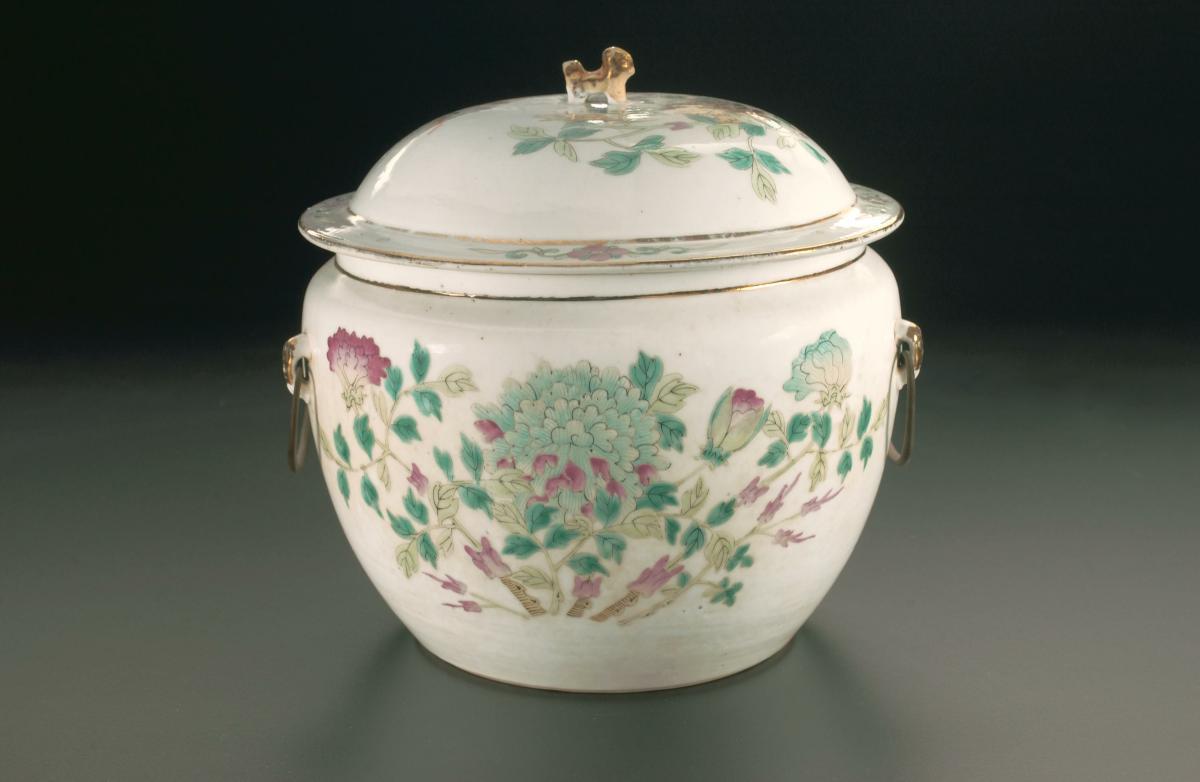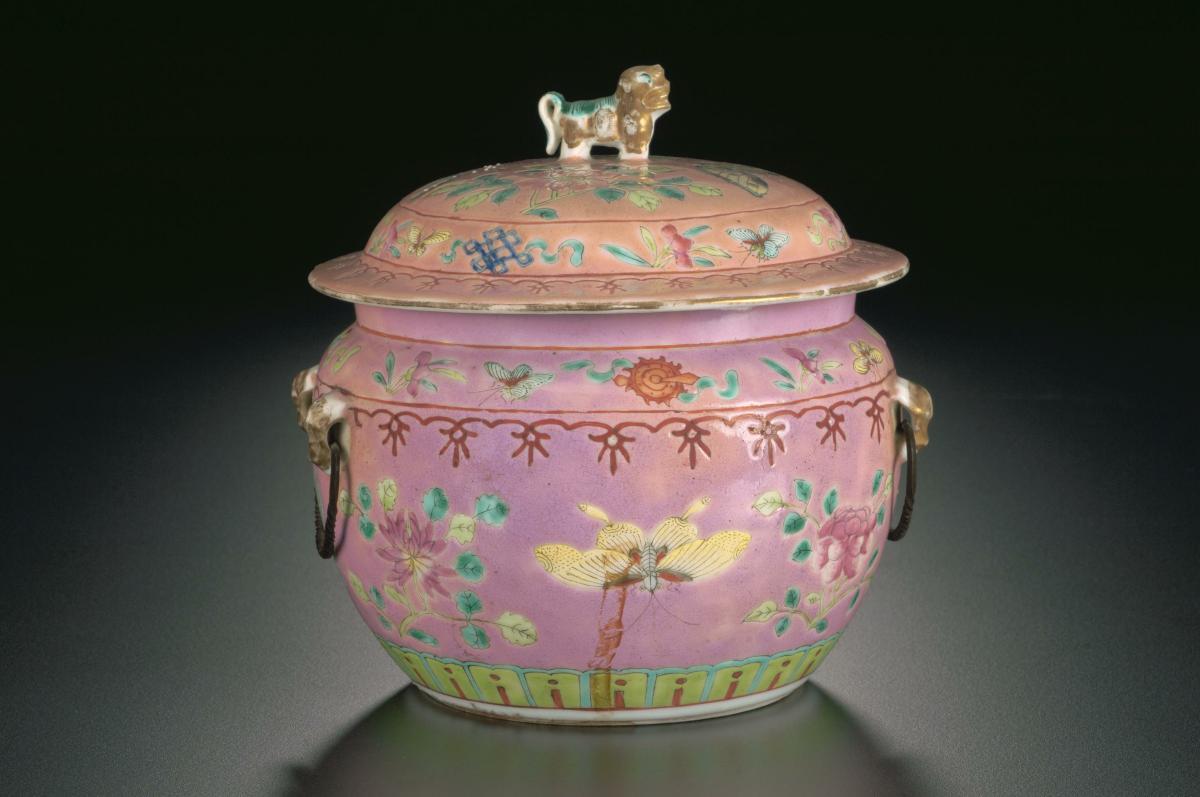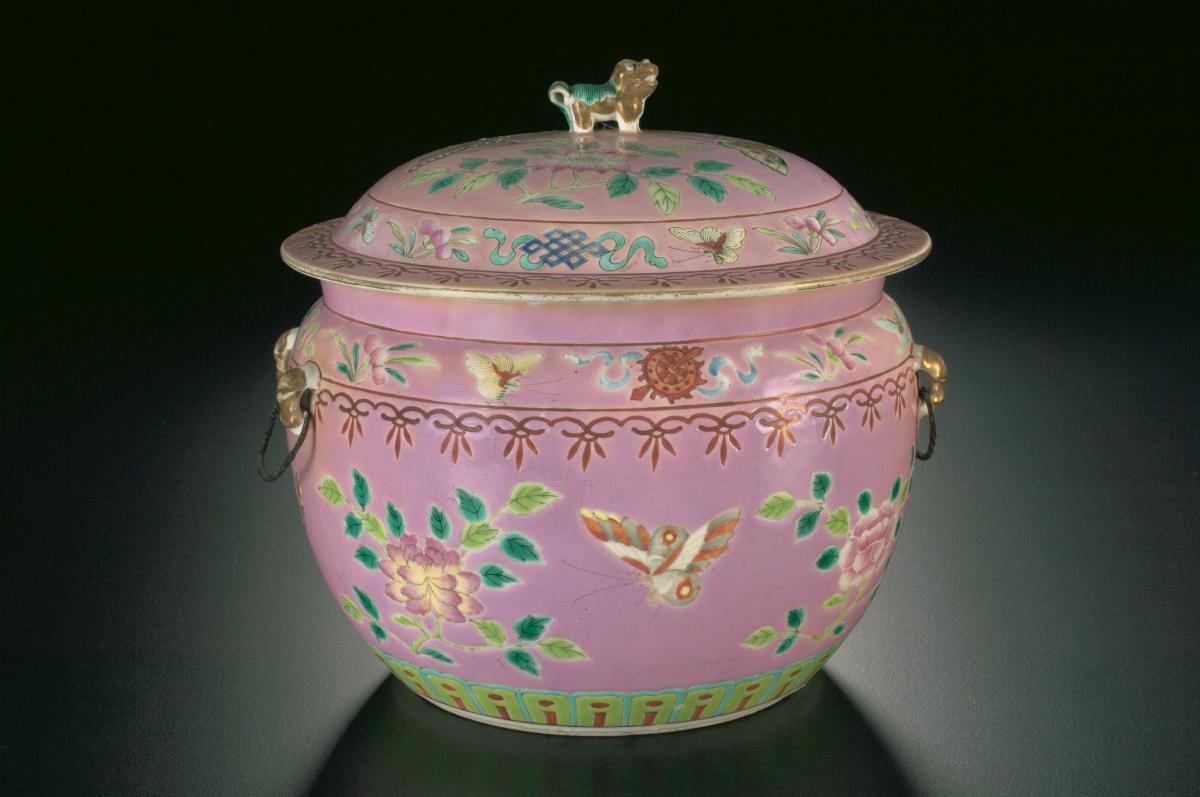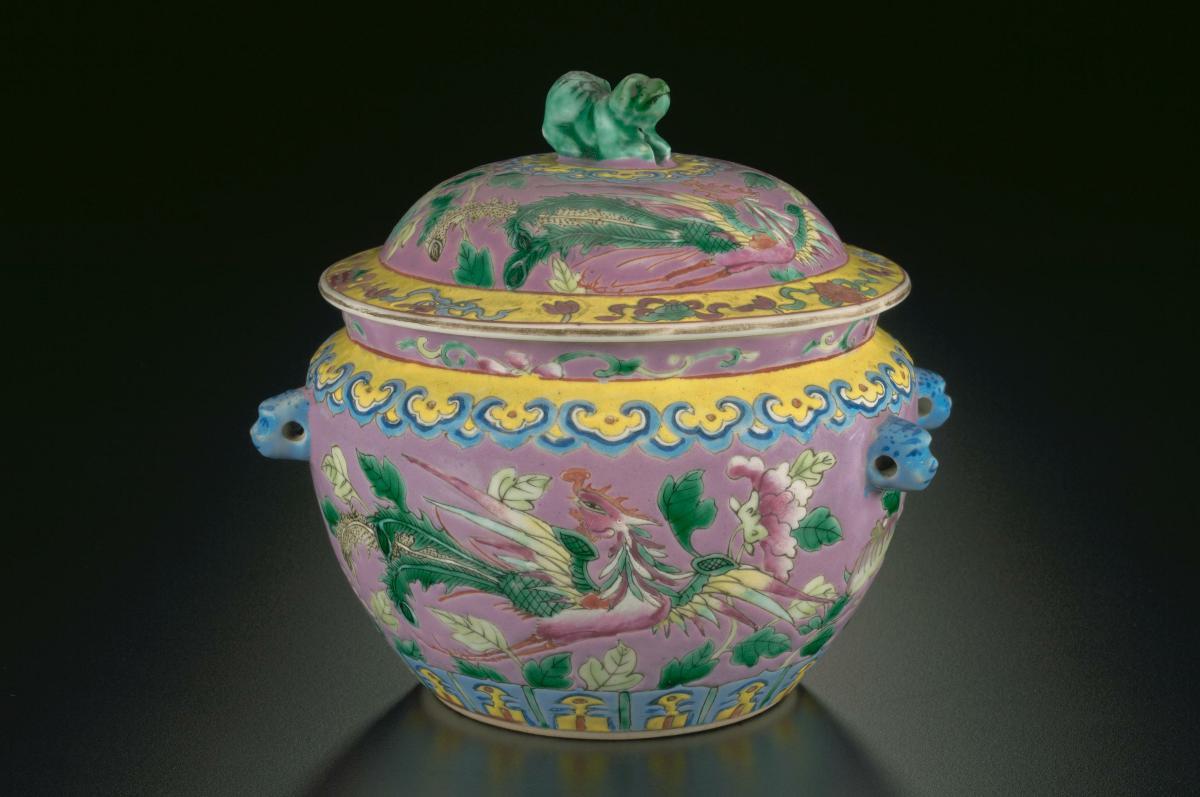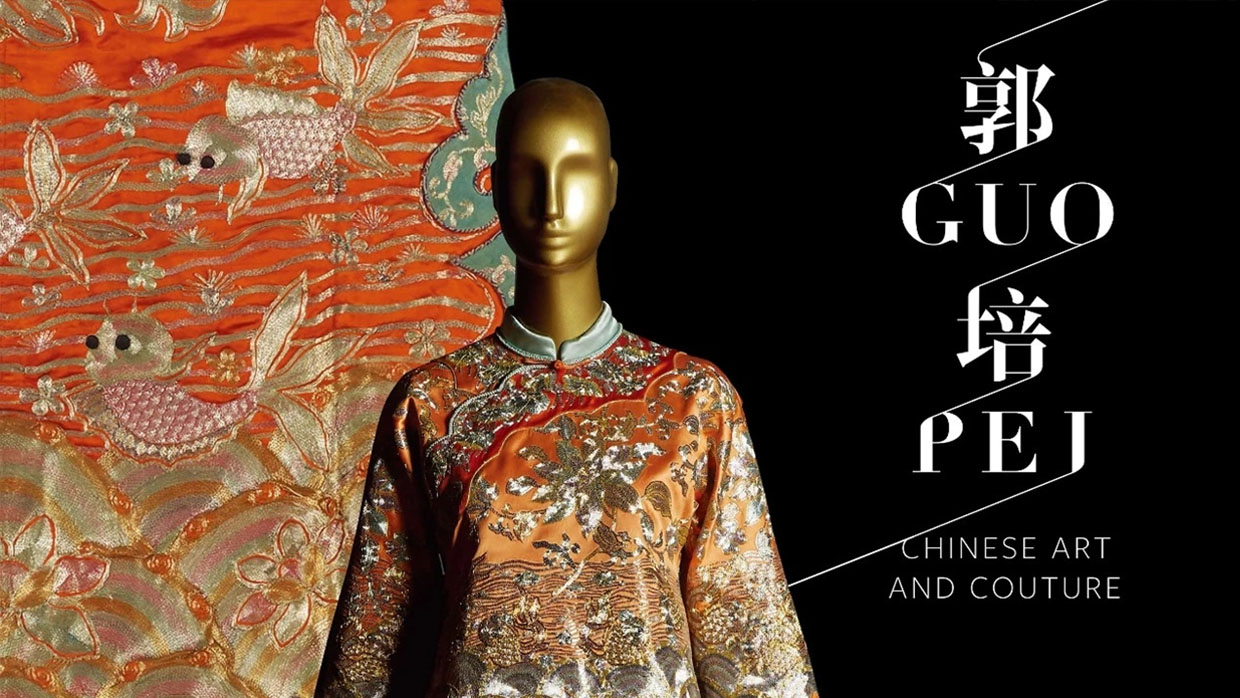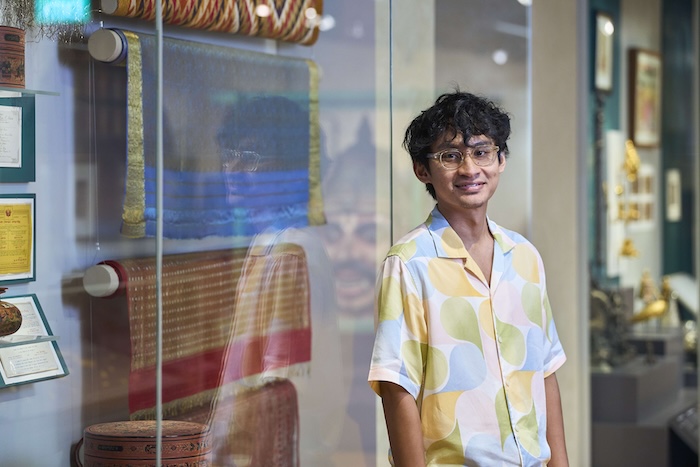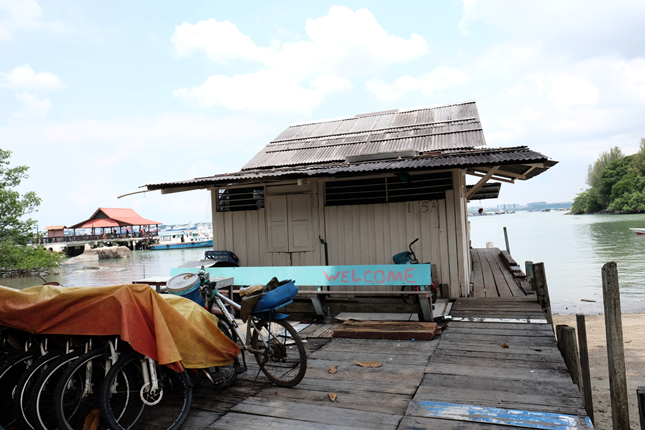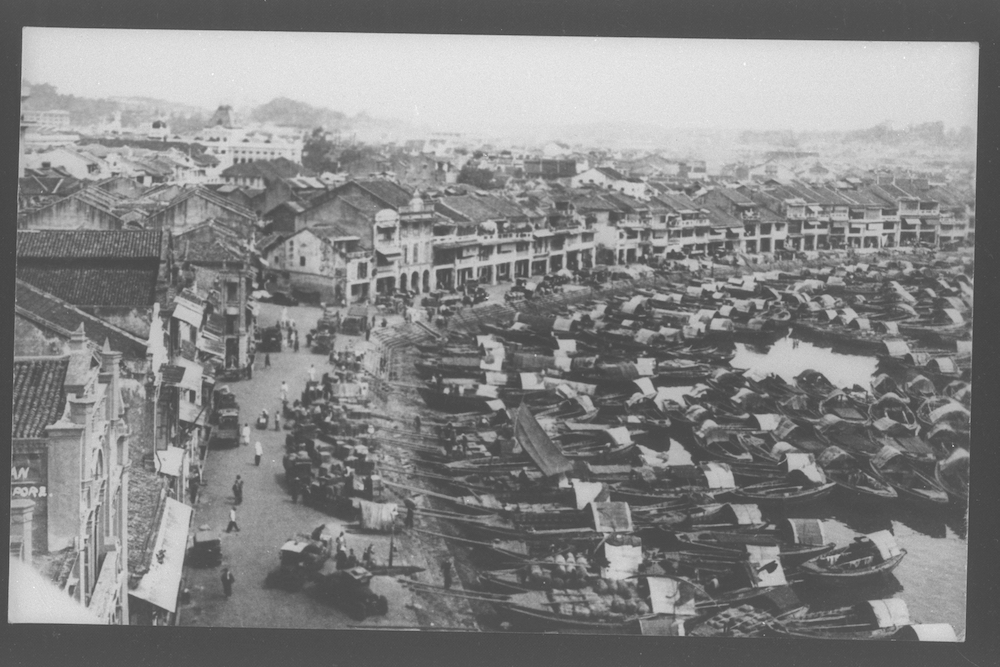The origin of the word 'kamcheng' is uncertain. It has been interpreted variously as a Hokkien term for 'covered jar' or more literally, 'covered teacup'. In Mandarin, the term translates into 'gai zhong' (盖重, 'covered soup measure'). A typical kamcheng is a circular, tub-shaped container fitted with a dome-like cover with a flat rim, and has two side-handles made of stout brass rings. The finial on the cover is modelled after the form of a crouching Buddhist lion, which is usually small in proportion to the size of the cover. This piece is decorated with peony motifs.The kamcheng has various functions and was made in a wide variety of sizes and colours. In general, it was used for storing drinking water, soups, desserts, and pickles for special occasions. The miniature versions were used as cosmetic containers while the largest ones were reportedly used as decorative status symbols for wealthy families.




